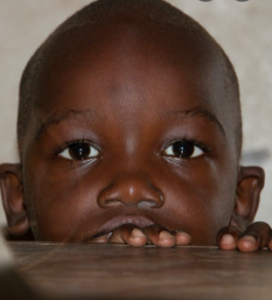Study of East Africans illuminates new genetic factors underlying human faces

Last Updated on August 22, 2021 by Joseph Gut – thasso
August 22, 2021 – A new study of the genetics underlying facial features finds that East Africans have some unique facial genetics and some that are shared with Europeans. The findings, published August 19th in PLOS Genetics by Chenxing Liu, Seth Weinberg and John Shaffer of the University of Pittsburgh and colleagues, add to our understanding of how genetics shape the human face.
 The remarkable range of shapes and sizes of the human face is largely the result of genetics. Previous studies have linked more than 100 genetic sites to facial characteristics, but most of these studies included only European or Asian populations. In the new study, Liu and colleagues focused on an East African population to expand our knowledge of the genetic factors behind human facial features.
The remarkable range of shapes and sizes of the human face is largely the result of genetics. Previous studies have linked more than 100 genetic sites to facial characteristics, but most of these studies included only European or Asian populations. In the new study, Liu and colleagues focused on an East African population to expand our knowledge of the genetic factors behind human facial features.
Thus, the team analyzed 2,595 3D facial images collected from Tanzanian children and scanned their genomes to find genetic sites linked to specific features. The researchers identified 20 regions on the genome associated with face shape. Several of these genetic variants play a role in embryonic cells that give rise to facial structures very early in life—around 3 to 6 weeks after conception. Ten of the genetic sites were previously identified in European populations, suggesting that the genetic basis for human face shape is partly shared across populations.
Shaffer adds, “Our findings confirm that the genes connected to human facial features are basically the same across populations. Observed differences were mostly explained by how frequently an allele occurs in a given population. By comparing populations, we were able to uncover genetic signals that would otherwise remain obscured and narrow the field of genetic variants that are functionally impacting facial traits.”
 The new study in Tanzanians uncovered novel sites and genes potentially related to face shape and also advanced the understanding of sites that were already recognized in
The new study in Tanzanians uncovered novel sites and genes potentially related to face shape and also advanced the understanding of sites that were already recognized in
Europeans. Overall, these findings shed light on the genetic and biological basis underpinning the diversity of human facial structures. They may also offer insights into the biological mechanisms responsible for how the face forms and the causes of facial deformities.
Weinberg adds, “Most published genetic studies of human facial traits have been limited to individuals of predominantly European ancestry, and African populations have been particularly under-represented in this field. The current study, therefore, represents an important advance in terms of diversity and provides new insights into the wide array of genes that impact facial appearance.”
The original of this article was published on and is fully credited to Medical Xpress and was only slightly edited/adapted by thasso. Thasso also had post in the past on the importance and opportunities of facial genetics in the diagnosis of rare genetic diseases in children as well as in the early recognition of intellectual disabilities (ID).
See here a short and somewhat entertaining sequence about the behinds of facial genetics:

